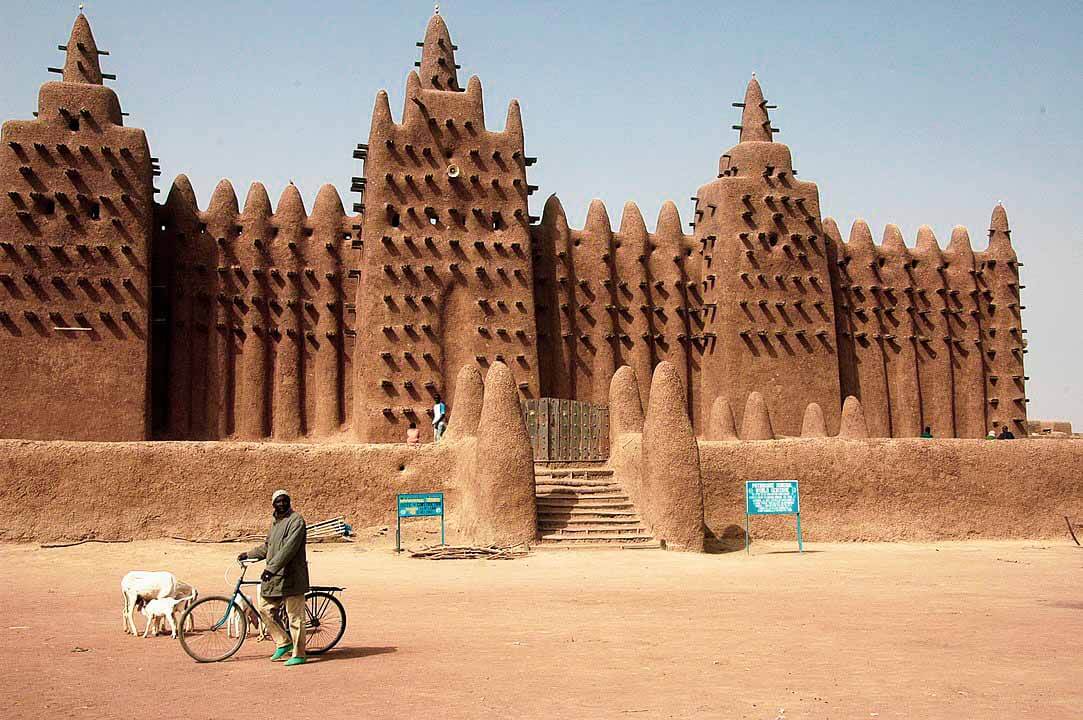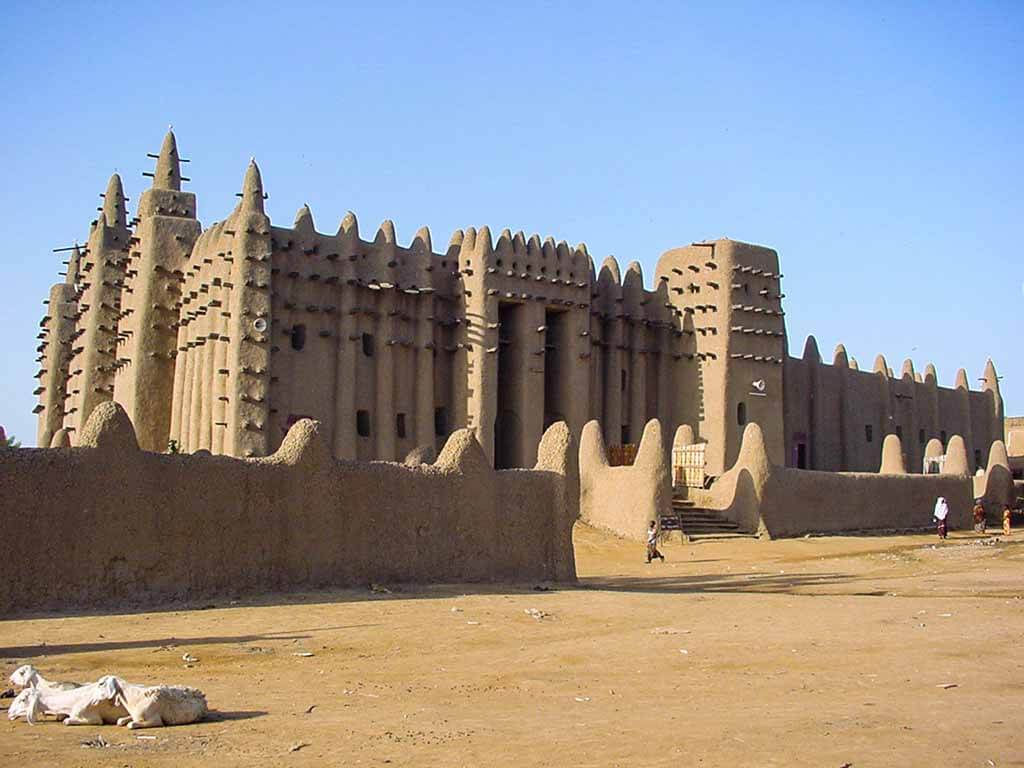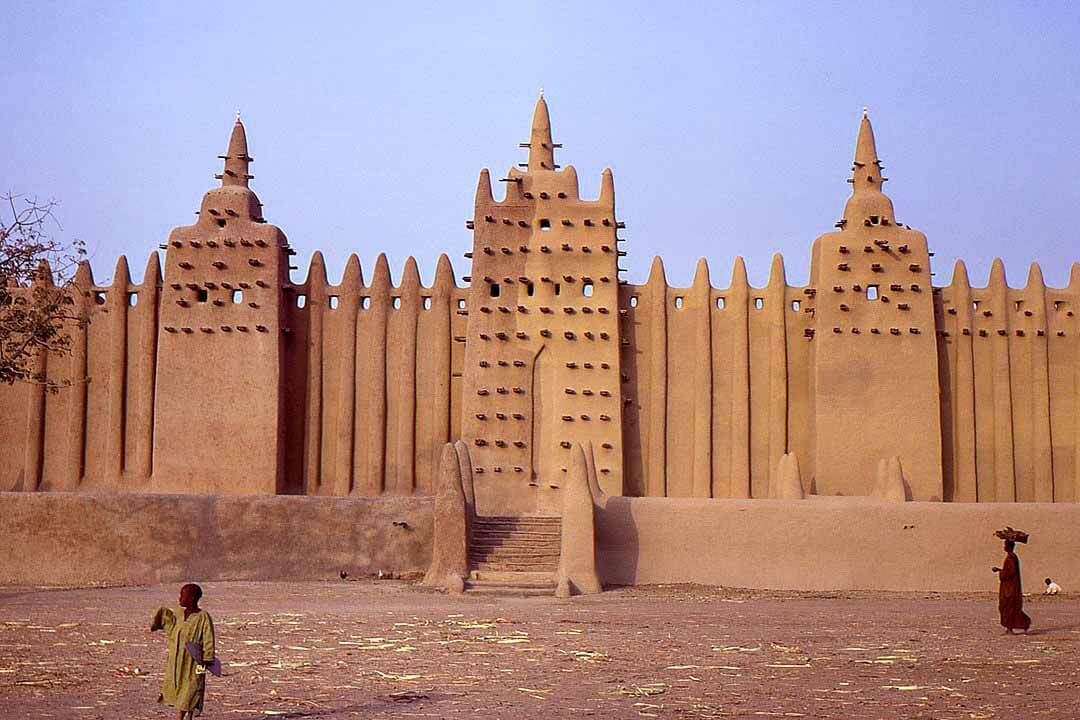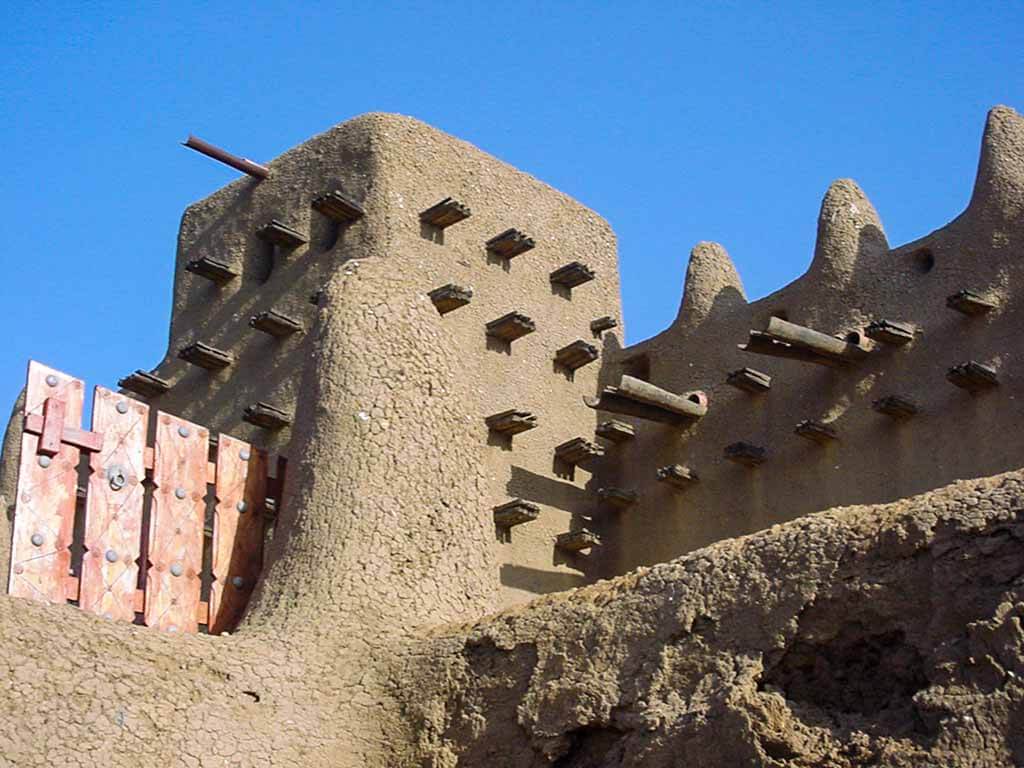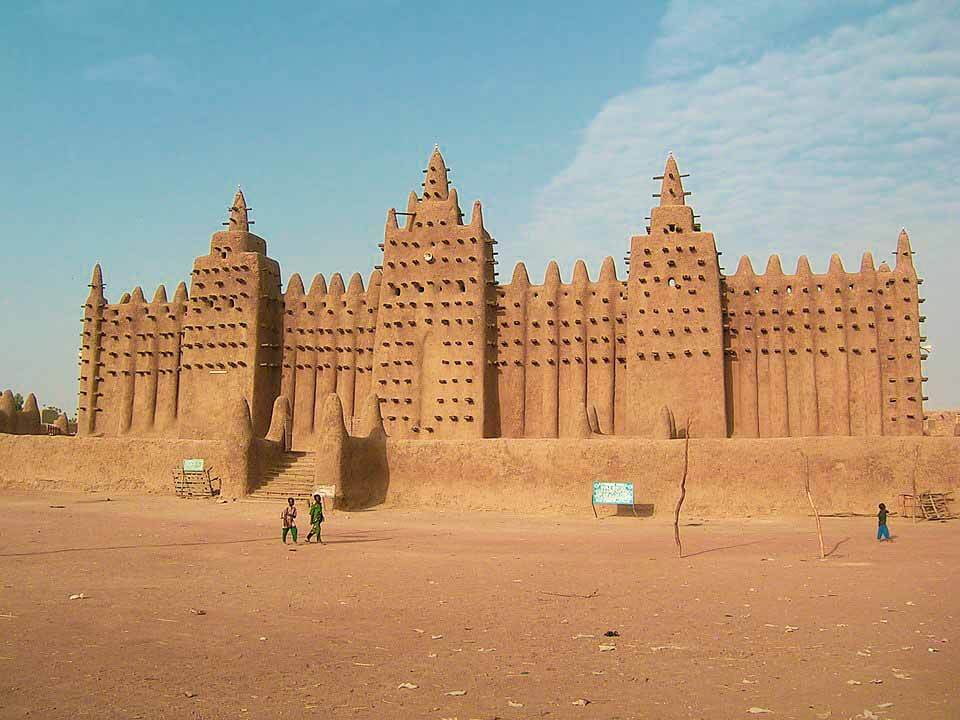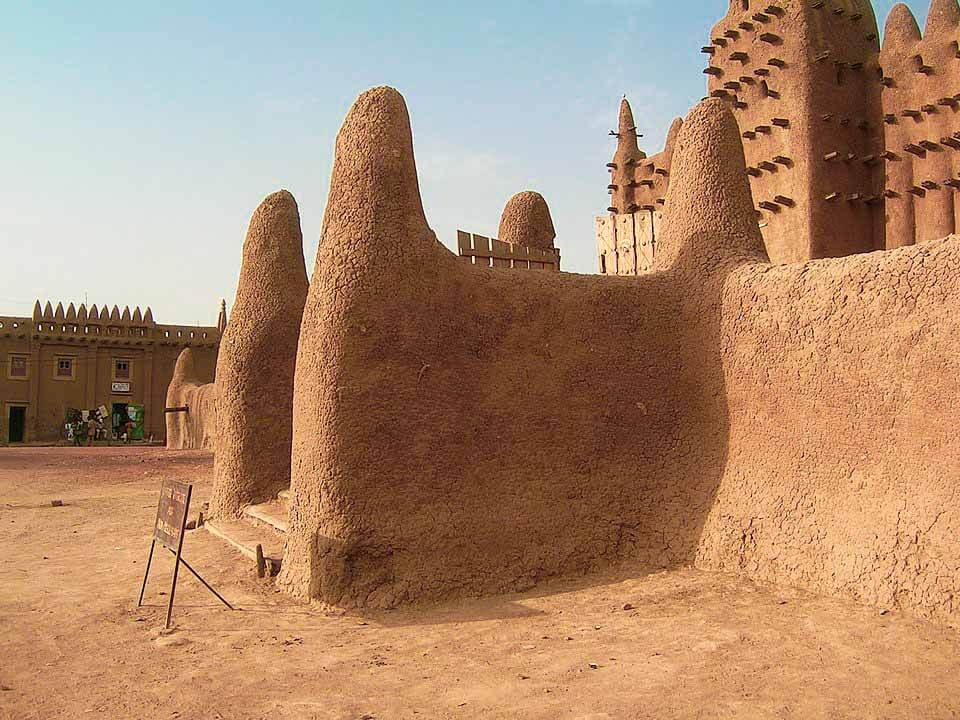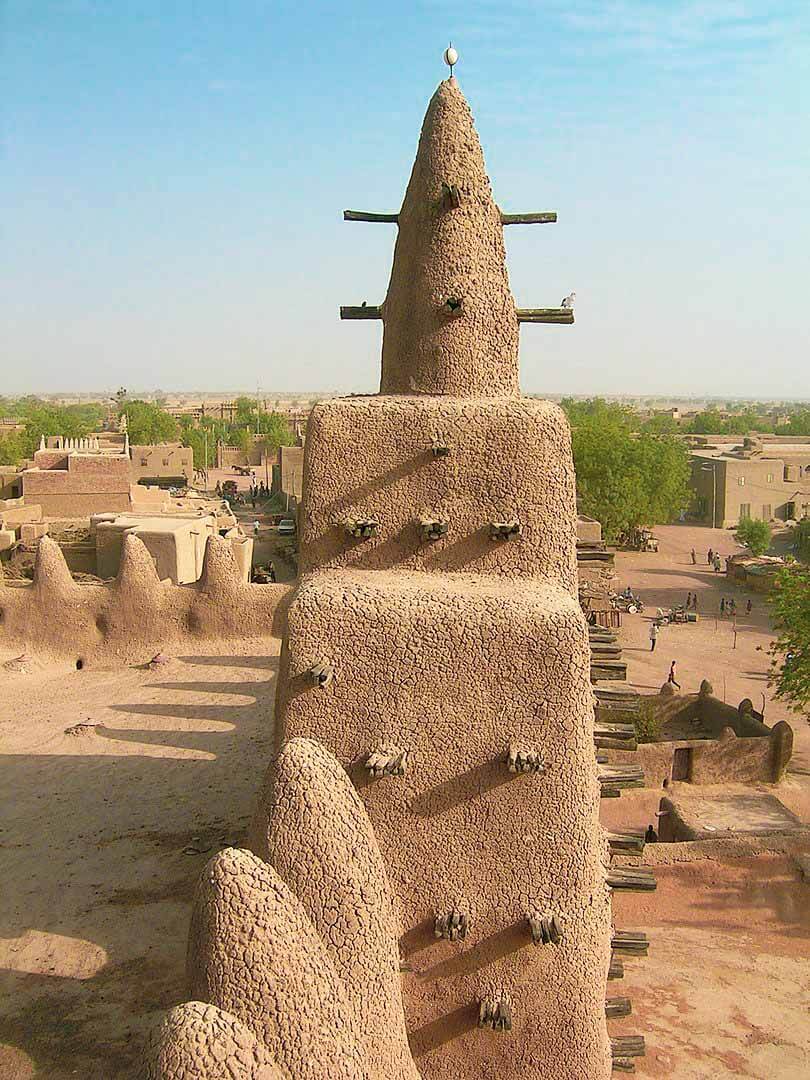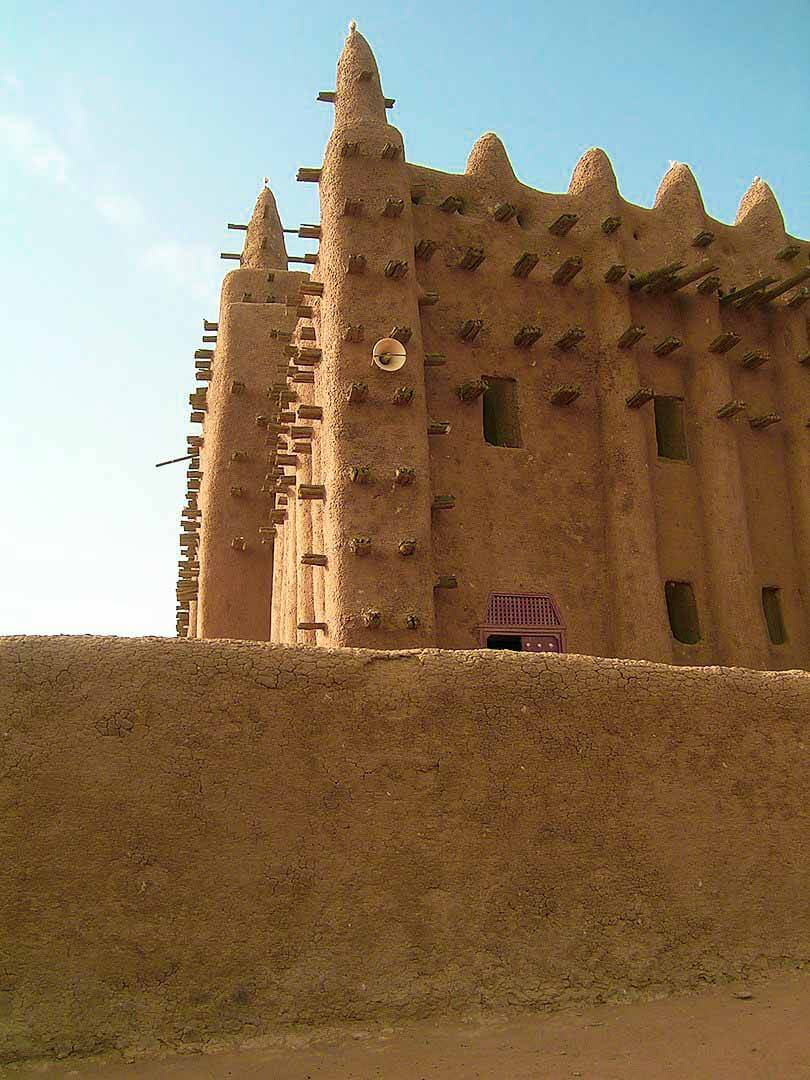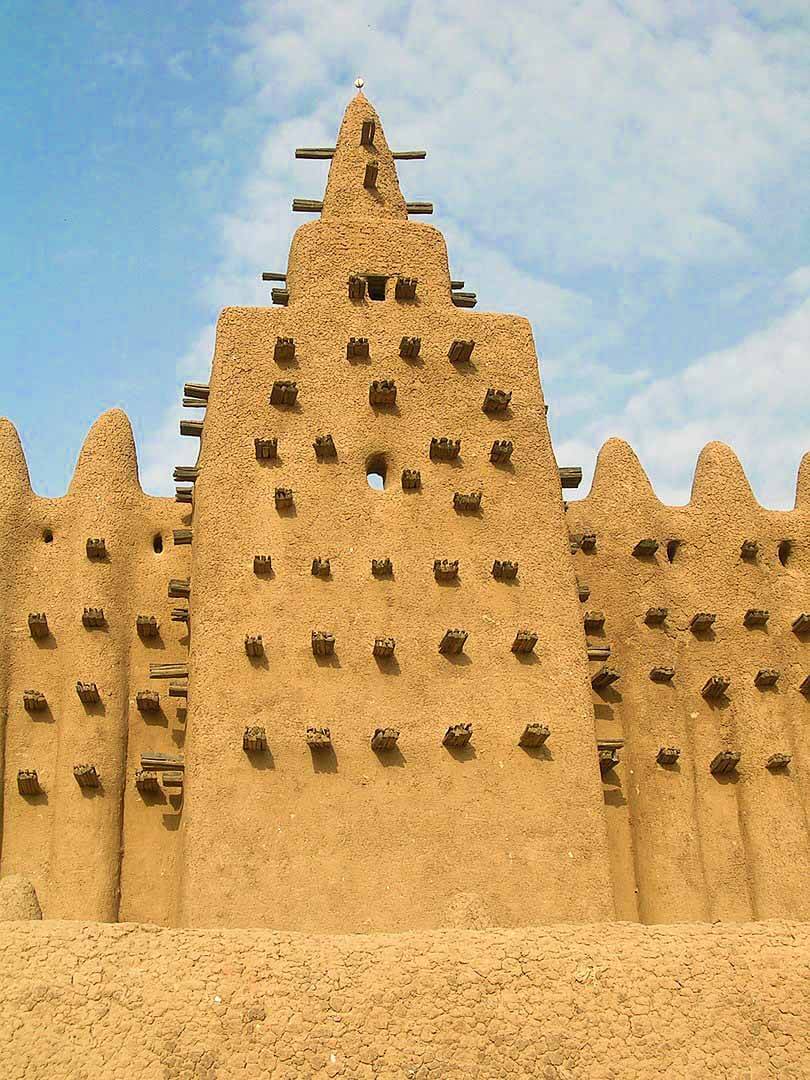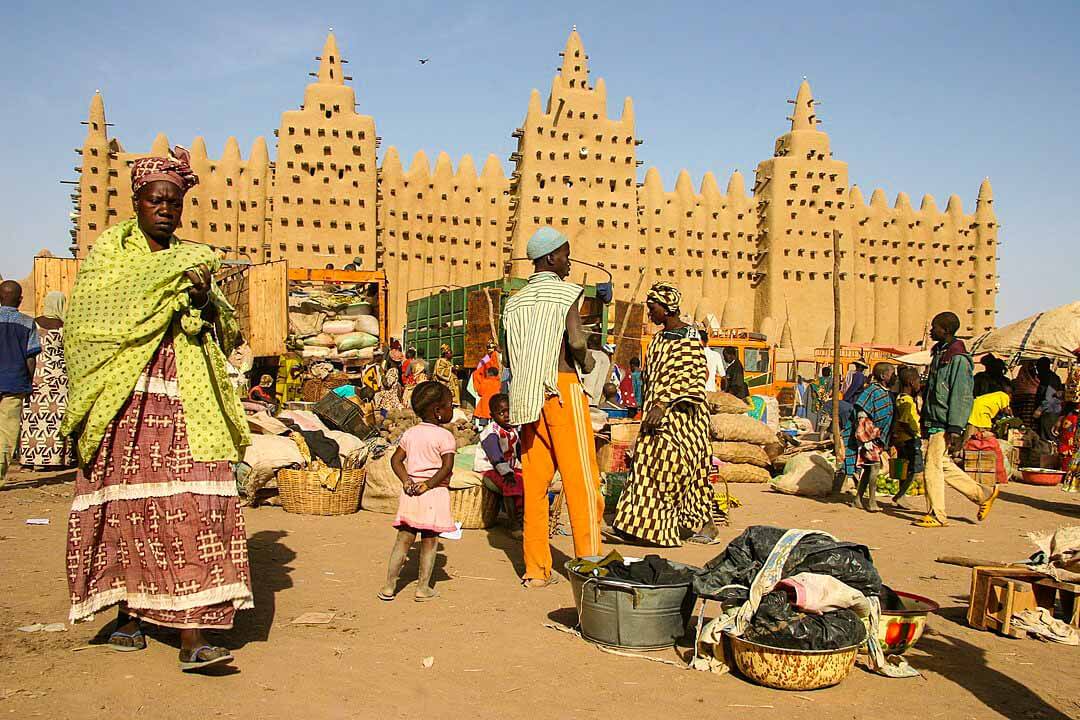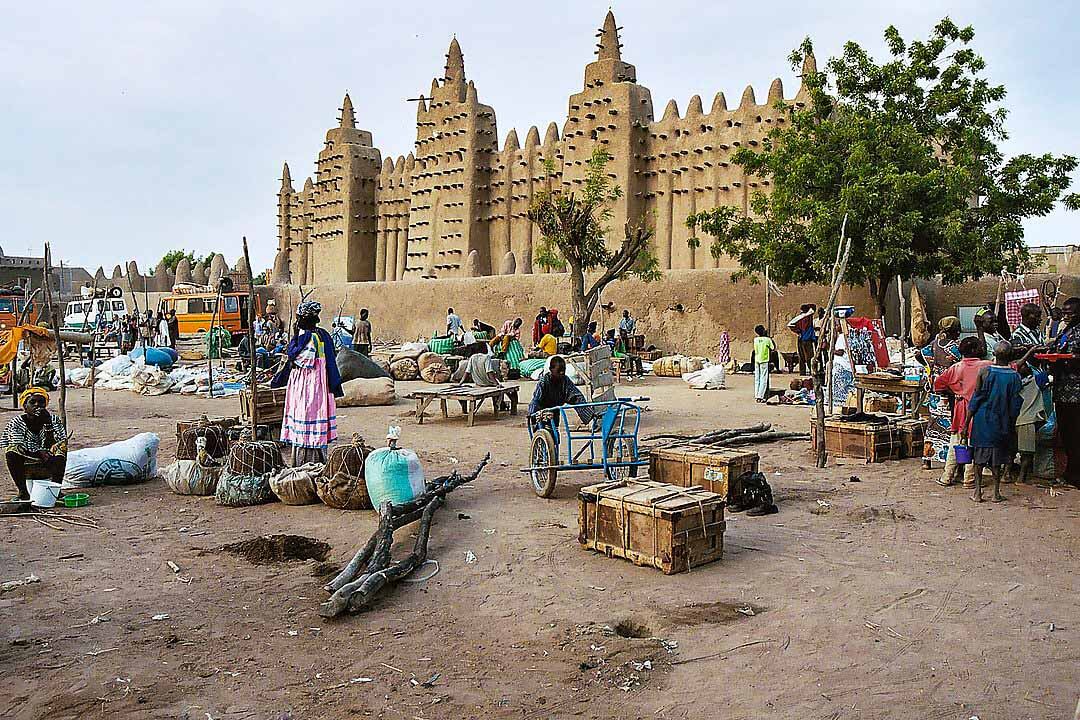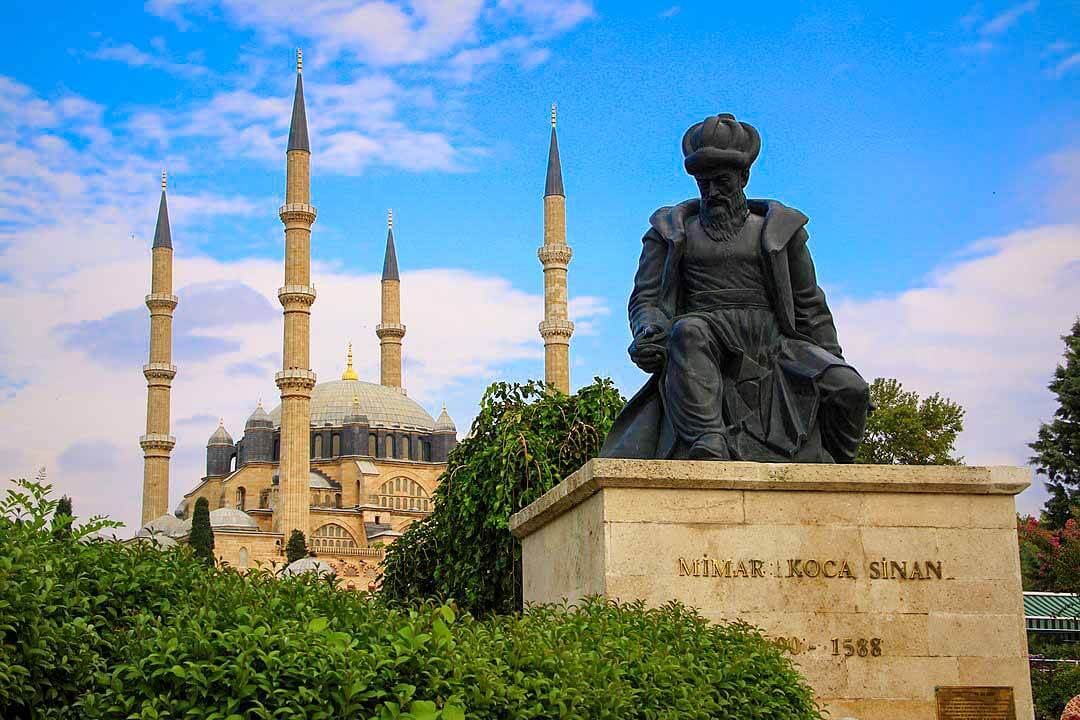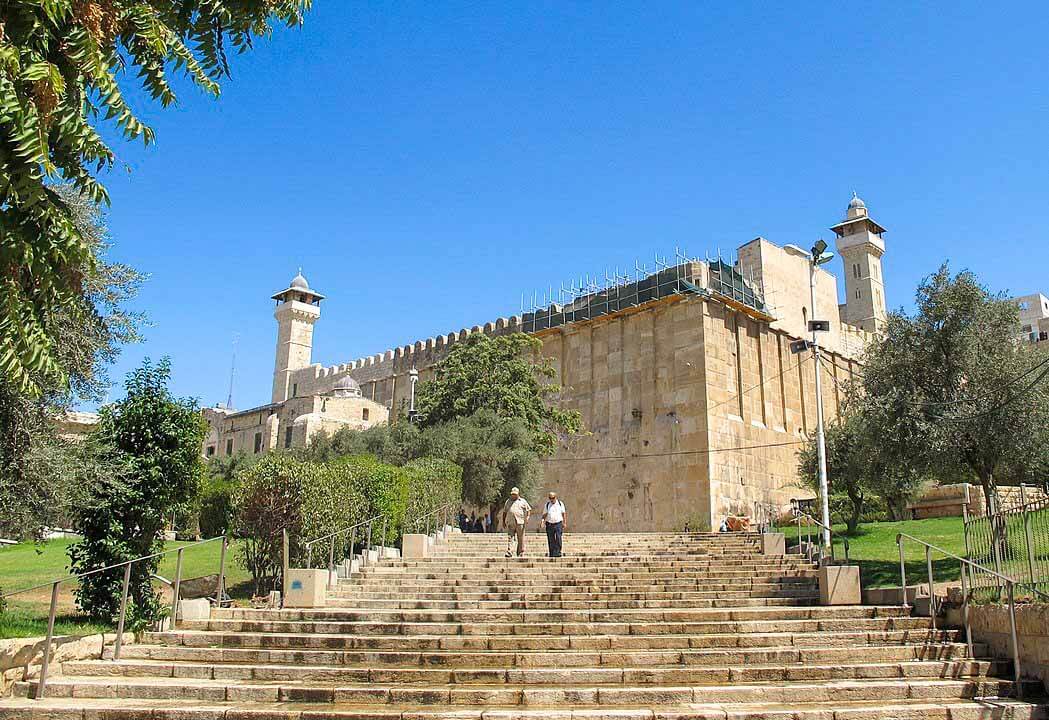Djenne, Mali
Coordinates: 13.905300, -4.555600
As one of the wonders of Africa, and one of the most unique religious buildings in the world, the Great Mosque of Djenné, in present-day Mali, is also the greatest achievement of Sudano-Sahelian architecture. It is also the largest mud-built structure in the world.
The mosque is located in the city of Djenné, Mali, on the flood plain of the Bani River.
The first mosque on the site was built around the 13th century, but the current structure dates from 1907.
As well as being the centre of the community of Djenné, it is one of the most famous landmarks in Africa.
Along with the “Old Towns of Djenné” it was designated a World Heritage Site by UNESCO in 1988.
History
The actual date of construction of the first mosque in Djenné is unknown, but dates as early as 1200 and as late as 1330 have been suggested.
The Tarikh states that when Sultan Kunburu became Muslim, he had his palace pulled down and the site turned into a mosque.
He built another palace for himself near the mosque on the east side. His immediate successor built the towers of the mosque while the following Sultan built the surrounding wall.
Maintainence of Mosque
The entire community of Djenné takes an active role in the mosque’s maintenance via a unique annual festival.
This includes music and food, but has the primary objective of repairing the damage inflicted on the mosque in the past year.
In the days leading up to the festival, the plaster is prepared in pits. It requires several days to cure but needs to be periodically stirred, a task usually falling to young boys who play in the mixture, thus stirring up the contents.
Men climb onto the mosque’s built-in scaffolding and ladders made of palm wood and smear the plaster over the face of the mosque.
Another group of men carries the plaster from the pits to the workmen on the mosque. A race is held at the beginning of the festival to see who will be the first to deliver the plaster to the mosque.
Women and girls carry water to the pits before the festival and to the workmen on the mosque during it.
Members of Djenné’s masons guild direct the work, while elderly members of the community, who have already participated in the festival many times, sit in a place of honor in the market square watching the proceedings.
World Heritage Site
The original mosque presided over one of the most important Islamic learning centers in Africa during the Middle Ages, with thousands of students coming to study the Quran in Djenné’s madrassas.
The historic areas of Djenné, including the Great Mosque, were designated a World Heritage Site by UNESCO in 1988.
While there are many mosques that are older than its current incarnation, the Great Mosque remains the most prominent symbol of both the city of Djenné and the nation of Mali.
Know This
Non-Muslim tourists used to be allowed to be guided inside, but some Italian tourists did something so foul that no non-Muslims can go inside any more


